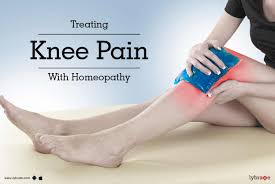Kaliums in Children
Appearence
Kalium Arsenicosum: On the physical level, the child has a dark complexion, greasy face and cuts on the lips; acne during adolescence.
Kalium bichromicum: Adapted to fat and light-haired individuals, who suffer from catarrhal affections; chubby,short-necked children, who are subjected to croup-like inflammations.
Kalium Bromatum: Adapted to the children, who are inclined to get obese, with blond hair and light complexion.
Kalium carbonicum: The face is pale, but red during cough with puffed eyelids.
Kalium iodatum: Big head and emaciated limbs, big teeth and small jaws.
Physicals
Kalium arsenicosum
Headaches connected with school work are not rare, as well as those from sinusitis, which often appear with chronic nasal catarrh, when the discharges are excoriating,
bloody, burning, greenish, thick and yellow.
When nursed, the child oft en suffers from diarrhoea with abdominal pains, which are ameliorated by hot applications. Heat also ameliorates otitis, where yellowish and offensive discharges are frequent and sometimes blood is
also present.
Sensation of enlargement of head and tongue and burning numbness of the tongue. Sensation of a ball rising in the larynx causing suffocation. Sensation of a red hot
iron in the anus.
The symptoms, especially those of the skin (herpes, erysipelas, intertrigo) are worse on the right side
Periodicity is marked as in Arsenicum album.
Kalium bichromicum
Metallic cough, fauces and tonsils are red and swollen, breathing is laboured and larynx is sensitive. The child has smothering spells and awakes choking. The formation of a thick membrane takes place and tendency of the disease is to extend downward, becoming
bronchitis. Violent wheezing with expectoration composed of tough and stringy mucus.
Snuffl es of children. Sinusitis with pressure and pain at the root of the nose and stitching pain in the nose.
Nasal discharges are thick, ropy, sticky, greenish, yellowish and acrid.
Tough, elastic plugs leave a raw surface. Post-nasal discharge of thick mucus. Loss of smell. Expired air feels hot.
Shift ing and wandering pains or pain in small spots are very characteristic
Alternating complaints are peculiar, such as rheumatic conditions alternating with intestinal troubles
Kalium bromatum
Skin aff ections with infl ammation seated in the sebaceous follicles
and in the sudoriferous glands. Severe acne, especially in girls with irregular menses.
Fat face, dandruff , warts and intertrigo can be found. Aphthae and thrush.
Spasmodic croup; child awakes suddenly with a sense of suffocation, a peculiar ringing, dry and brassy cough and hurried breathing.
They are agitated and their face is flushed
After one or two hours, the child falls asleep and breathes easily and naturally, only to awake againin a similar paroxysm.
Hoarseness, extremely painful and disagreeable cough with confusion of the head; remission during daytime.
Nocturnal enuresis from too profound
sleep
Difficult dentition; nocturnal anxiety, sleeplessness, vomiting, diarrhoea, cough and suppressed salivation
Useful in nursling colic. The children can easily swallow solids, but choke every time they try to drink.
Kalium carbonicum
The ‘mental strictness’ is reflected on the physical level with joint troubles (to be considered in juvenile arthritis). Torticollis and breathing disorders from exposure to draughts.
Indicated in infantile pneumonia, especially of the right lower lobe, with intense dyspnoea preventing child from sleeping and drinking. Although, there is a great deal of mucus in the chest, but it is raised with difficulty and must be swallowed. Breathing with wheezing and whistling in the chest and a choking cough is present day and night, aggravated from 3 – 4 a.m. and ameliorated after breakfast.
The face is pale, but red during cough with puffed eyelids; the
pains reach the abdomen
The pain is typically stitching but, unlike Bryonia which has the same pain, is not worsened by
movement
Kalium chloricum
Stomatitis ulcerosa; gums swollen, easily bleeding and usually project from a set of bad teeth; fetor oris; salivation; aphthous ulcers on tongue and cheeks, particularly in children.
Aphthae, thrush of newborns or nursing mothers, without great
flow of saliva.
Allen wrote ‘It has been found extremely useful in gangrene of the mouth in children, nearly every case has been cured’.
Hydrocele in the newborns
Crusta lactea
Chafi ng or rawness of the skin in
children. Diaper rash.
Kalium iodatum
Children cannot bear to be touched, cannot ride in jolting conveyances, have a big head and
emaciated limbs, big teeth and small jaws
They tend to pass urine and stool frequently
Children needing Kali iodatum are always warm and want the covers off
The discharges are copious, thick, green or yellowish-green and sometimes foetid, as is leucorrhoea in girls. Winking often becomes painful.
Extreme pain at the root of the nose as well as at the root of the tongue at night
Ameliorated externally by cold air but cold things cause aggravation internally; worse at the seaside
Kali iodatum is a syphilitic remedy; a tendency for ulceration is marked.
Diseases of periosteum and capsular ligaments of the joints.
Kalium muriaticum
Aphthae, thrush and white ulcers in the mouth of little children
Infl ammation of the middle ear leading to deafness. Suppurationis often accompanied by noises in the ear and sometimes by gastric disturbances or eczema.
Cracking noises on swallowing or blowing the nose
It is a specifi c remedy for follicular tonsillitis, accompanied by catarrhal
condition of the middle ear. Stringy tough and white mucus in the throat (differential diagnosis:
Kalium bichromicum – tough and yellow mucus) and
enlarged cervical and submaxillary glands. Caseous deposits on
the tonsils. Child can swallow only when twisting the neck.
White, thick and sticky secretions (leucorrhoea, dandruff , expectoration
and white cheesy lumps from tonsils)
Considered when there is a suppuration of ear lobe appear aft erpiercing
Obstinate eczema, crusta lactea, scurfy eruptions on the head and face. Skin eruptions after vaccination.
Diarrhoea aft er fatt y food
Hydrocele
Epilepsy of extremely nervous children who suffer from dyspepsia and urticaria
Kalium nitricum
Affects especially the respiratory organs but also the kidneys, heart and blood vessels
Child cannot drink for want of breath and must drink in little sips; takes the cup in both the
hands and drink greedily one sip after another.
It should be remembered in the rheumatism of children when there is incontinence of urine and the pains are sticking, cutting and lancinating in character.
Kalium phosphoricum
Enuresis from nervous debility; frequent urination on passing of much water, frequent scalding.
Gnawing pains
Otitis which may lead to perforation of the tympanum, with foetid discharge
Menarche is generally delayed and leucorrhoea is oft en presentin the first years of life
Kalium silicicum
The relation with milk is contradictory; aggravation and desire but more oft en aversion, especially to the mother’s milk.
Abdominal pains may appear, which tend to be ameliorated by hot applications
Earache, which may be accompanied by yellow, thick and offensive discharge and is ameliorated by hot applications
Kalium sulphuricum
Chronic nasal obstruction deriving from different factors like sinusitis, hay fever or polyps. This complaint is usually ameliorated
by heat.
Whistling and rattling are audible at a distance; the child tends to snore.
It can be oft en used as a complementary remedy to Pulsatilla in case of lungs disorders with characteristic symptoms, such as aggravation in a hot room, chocking, aphonia and dry mouth without thirst.
Good remedy for acute bronchitis with thick yellow mucus which the child cannot expectorate (differential diagnosis: Kali bichromicum,Antimonium tartaricum,Causticum)
Otitis with yellow-greenish, watery, excoriating and offensive discharges
Complaints following scarlet fever; albuminuria and swollen face
Mentals
Kalium arsenicosum
On the mental level, some characteristic symptoms of arsenic compounds are found:
Desire for company and aggravation when alone; fear to be alone
Claustrophobia
Suspiciousness
Criticism
Anxiety for their health, especially about heart diseases
Quarrelsome and intolerant of contradiction
Kalium bromatum
Suffer from anxiety due to anticipation as they are not self-confident
Rajan Sankaran wrote:
These patients are very meticulous and organized. The look of the patient is as if embarrassed
and feeling guilty.
I have found that they come from very strict and religious families
They have many sexual symptoms with guilt feelings
Puberty is an important time for Kalium bromatum. Sexual fantasies are quite prominent and they may have perversions such as sexual desire for their mother or sister.
Looks on all sides to see if people are observing him; he feels guilty like a criminal
Useful in somnambulism and night tremors of the children, with shrieking and trembling in sleep
Kalium carbonicum
Kalium carbonicum children are particularly rigorous. There is a tendency to be logical and to rationalize emotions.
They are extremely honest; would never do anything illegal; strictly adhere to the rules and always behave correctly. A strong sense of duty leads them to work hard at school.
The important aspect of these children is family, which is seen as a support
Children who needs Kalium carbonicum tend to be anxious when ill and often want to be carried
Kalium iodatum
Extremely restless; want to be in constant motion
Irritable, cruel, harsh and abuse their family
Nervous, must be on the go and walking
Weak and tired in a room; feel better outdoors, can walk long distances without fatigue and rest brings nervous exhaustion
Kalium muriaticum
Sense of duty and family. However, the patient may have an aversion to the family and be quarrelsome with them.
Dreams of dead bodies and murders committed by their relatives, followed by anxiety and insomnia
Aversion of being disturbed, to noise, to talk, to company and to study
Kalium nitricum
Fretful and peevish
Kalium phosphoricum
Cross and ill-tempered, fretful, frightened, screaming and whining
The nervous exhaustion is the most characteristic symptom of these children. It is due to a combination of excessive mental effort, excitement, worries and oppression,
which leads the patient to lose control.
The child is particularly nervous, starts easily at the slightest and
sudden noise
The slightest job seems a heavy task
Night terrors in the children who awake screaming and in fright.
Somnambulism.
Kalium sulphuricum
The child is curious, loves change, travelling and having fun, especially
dancing and singing
A sort of mania for cleaning may appear, with compulsion to wash their hands very often
School
Kalium arsenicosum
In school, the children show very important aspects like meticulousness, obstinacy, shyness, strong sense of duty and fear of failure.
School – anxiety
Mind – Fear – failure, of (stj2)
School – mental exertion
Head – Pain – mental exertion – agg. (k)
School – constitution
Mind – Fastidious (gk)
Mind – Obstinate (oss)
Kalium bichromicum
School – anxiety
Rectum – Diarrhoea – excitement agg.
(gk)
School – concentration
Mind – Concentration – diffi cult –
studying (ckh1,vh)
School – constitution
Mind – Fastidious (gk,k2)
Mind – Obstinate (oss)
Kalium bromatum
Children who do not get well
at school; slow and stammering
speech.
Diffi culties in writing oft en appear,
with omission of lett ers, syllables
or words. Dyslexia.
School – anxiety
Mind – Ailments From – anticipation
(st)
Mind – Confi dence – want of self-confi
dence (ckh1)
School – concentration
Mind – Unobserving (= inatt entive)
(bg2)
School – learning – generalities
Mind – Dyslexia (mtf)
School – learning – writing
Mind – Mistakes; making – writing, in
(k)
Mind – Mistakes; making – writing, in –
omitt ing – lett ers (bro1,k)
Mind – Mistakes; making – writing, in –
omitt ing – syllables (k)
Mind – Mistakes; making – writing, in –
omitt ing – words (bro1,k)
Mind – Mistakes; making – writing, in –
repeating words (k)
Mind – Writing – indistinctly, writes (a1)
School – relationship with others
Mouth – Speech – stammering (a1, bg2,
hr1, k, ptk1)
School – constitution
Mind – Confi dence – want of self-confi
dence (ckh1)
Kalium carbonicum
School – anxiety
Mind – Ailments From – anticipation
(bg)
Mind – Confi dence – want of self-confi
dence (k)
School – concentration
Mind – Concentration – diffi cult –
studying (k)
Mind – Unobserving (= inatt entive)
(bg2, j5.de, k)
School – learning – mathematics
Mind – Mathematics – inability for (gl1.
fr, mtf33)
Mind – Mathematics – inability for –
calculating (gl1.fr)
School – learning – writing
Mind – Mistakes; making – writing, in
(sf1.de)
School – mental exertion
Head – Pain – mental exertion – agg. (st)
School – reproach
Mind – Admonition – agg. (bg2,ptk1)
Mind – Weeping – admonition, from (k)
School – constitution
Mind – Confi dence – want of self-confi
dence (k)
Mind – Conscientious about trifl es (fd,
gb)
Mind – Fastidious (gg, mtf33)
Mind – Hurry – occupation, in (k)
Mind – Obstinate (b4.de, bg2, br1, bro1, k,
mrr1, mtf33, oss)
Mind – Obstinate – children (mtf33)
Mind – Responsibility – taking responsibility
too seriously (mtf, vh)
Kalium nitricum
School – anxiety
Mind – Confi dence – want of self-confi
dence (k)
School – mental exertion
Head – Pain – mental exertion – agg. (st)
School – constitution
Mind – Confi dence – want of self-confi
dence (k)
Kalium Phosphoricum
Sense of duty about studying;
they learn easily but tend to be too
demanding on themselves, hence
they suff er from complaints such
as headaches or stomach pains.
They are anxious, oversensitive,
shy and blush easily. They are
afraid of talking in public and of
failing in their exams, with consequent
diarrhoea but they are very
meticulous and obstinate.
They have diffi culties especially
with reading (even dyslexia) and
with mathematics.
School – anxiety
Mind – Ailments From – anticipation
(kr1)
Mind – Confi dence – want of self-confi –
dence (fd1.de, mrr1)
Mind – Fear – failure, of (zzz)
Mind – Fear – failure, of – examinations;
in (fyz)
Mind – Fear – undertaking anything; of
(fyz)
Rectum – Diarrhoea – excitement agg.
(bro1, k, vh/dg, vhx1)
Rectum – Diarrhoea – nervous, emotions
agg. (bg2)
School – concentration
Mind – Concentration – diffi cult –
studying (st)
Mind – Dullness – reading (fd1.de)
Mind – Prostration of mind – reading,
from (fd1.de)
Mind – Prostration of mind – study;
prolonged (fd1.de)
Mind – Unobserving (= inatt entive)
(zzz)
Mind – Unobserving [= inatt entive) –
spoken to, when (fd1.de)
School – learning – generalities
Mind – Dyslexia (mtf)
School – learning – mathematics
Mind – Mathematics – inability for (zzz)
Mind – Mathematics – inability for –
summing up is diffi cult (fd1.de)
Mind – Mistakes; making – calculating,
in (zzz)
Mind – Mistakes; making – calculating,
in – adding; in (fd1.de)
School – learning – reading
Mind – Dullness – reading (fd1.de)
Mind – Reading – diffi cult; is (fd1.de)
School – learning – writing
Mind – Mistakes; making – writing, in
(k)
Mind – Mistakes; making – writing, in –
wrong – lett ers, fi gures (fd1.de)
Mind – Writing – indistinctly, writes
(fd1.de)
School – mental exertion
Mind – Prostration of mind – reading,
from (fd1.de)
Mind – Prostration of mind – study;
prolonged (fd1.de)
Head – Pain – mental exertion – agg.
(bro1, k, mrr1)
Head – Pain – reading – agg. (fd1.de)
Head – Pain – students (K2)
Head – Pain – Forehead – reading agg.
(fd1.de)
School – relationship with others
Mind – Timidity – public; about appearing
in (fyz,mtf)
School – constitution
Mind – Confi dence – want of self-confi –
dence (fd1.de, mrr1)
Mind – Conscientious about trifl es (fd1.
de)
Mind – Fastidious (fd1.de)
Mind – Hurry – occupation, in (k13,k2)
Mind – Obstinate (k, oss)
Kalium silicicum
Kent wrote: ‘It is a very useful remedy
for children in school when they
cannot learn their lessons’. In fact,
this remedy is indicated in various rubrics
in the ‘School’ section; from mental
dullness when reading to mistakes
in writing; from general diffi culties in
studying to headache from mental exertion.
However, as with other silicate
compounds, the child is insecure and
shy, but at the same time, very meticulous
and obstinate, with a strong sense
of duty. They seem to be very good at
mathematics.
School – anxiety
Mind – Confi dence – want of self-confi –
dence (K2, mtf33, vh/dg, vhx1)
Mind – Fear – failure, of (stj2)
Mind – Fear – failure, of – examinations;
in (stj2)
School – concentration
Mind – Concentration – diffi cult –
studying (k2, mtf33, st)
Mind – Dullness – reading (k2)
Mind – Studying – diffi cult (mtf33)
School – learning – generalities
Mind – Studying – diffi cult (mtf33)
School – learning – mathematics
Mind – Mathematics – ability for (stj2)
School – learning – reading
Mind – Dullness – reading (k2)
School – learning – writing
Mind – Mistakes; making – writing, in
(k2)
School – mental exertion
Head – Pain – mental exertion – agg. (k2)
School – constitution
Mind – Confi dence – want of self-confi –
dence (K2, mtf33, vh/dg, vhx1)
Mind – Conscientious about trifl es (stj2)
Mind – Obstinate (k13, K2, oss)
Kalium sulphuricum
School – anxiety
Mind – Confi dence – want of
self-confi dence (k1, mrr1, vh/dg, vhx1,
vml1.nl)
Mind – Fear – failure, of (fd4.de)
School – learning – writing
Mind – Mistakes; making – writing, in
(k)
Mind – Mistakes; making – writing, in –
omitt ing – lett ers (fd4.de)
Mind – Mistakes; making – writing, in –
repeating words (fd4.de)
Mind – Mistakes; making – writing, in –
transposing – lett ers (fd4.de)
Mind – Mistakes; making – writing, in –
wrong – words (fd4.de)
School – mental exertion
Head – Pain – mental exertion – agg.
(fd4.de)
School – constitution
Mind – Confi dence – want of self-confi –
dence (k1, mrr1,vh/dg,vhx1,vml1.nl)
Mind – Conscientious about trifl es (fd,
fd4.de)
Mind – Curious (fd4.de)
Mind – Fastidious (fd, fd4.de)
Mind – Obstinate (k)
Mind – Trifl es – important; seem (fd, fd4.
de)
Mind – Untidy (fd4.de, fk r2.de)
* Rubrics from the book “Children”
– Roberto Petrucci
About the author
Roberto Petrucci, MD, is a teacher of Homeopathy
in several schools in Italy and
abroad. He is the director of studies at
‘Centre for Homeopathy’ in Milan and in
Catania (Italy). He is the author of Paediatric
Repertory ‘Children Concepts’ and
the book ‘Children Homeopathic Materia
Medica with Repertorial Symptoms’. He
is a teacher of Materia Medica for the specialisation
course in homeopathic medicine
held at the University of L’Aquila. He
was the director of ‘Training Department
of the Italian Federation of Homeopathic
Doctors, FIAMO from 2000 – 2005.
Source : The Homoeopathic Heritage





